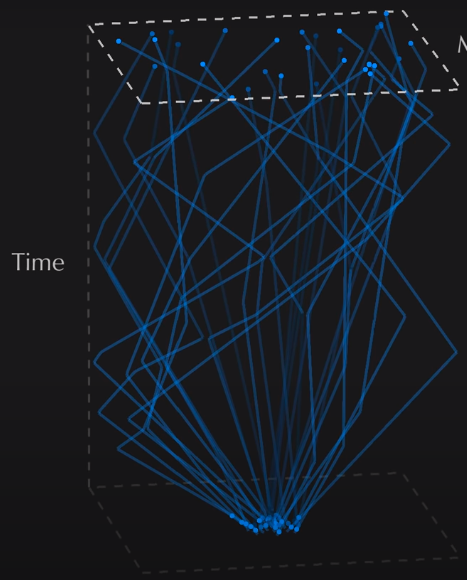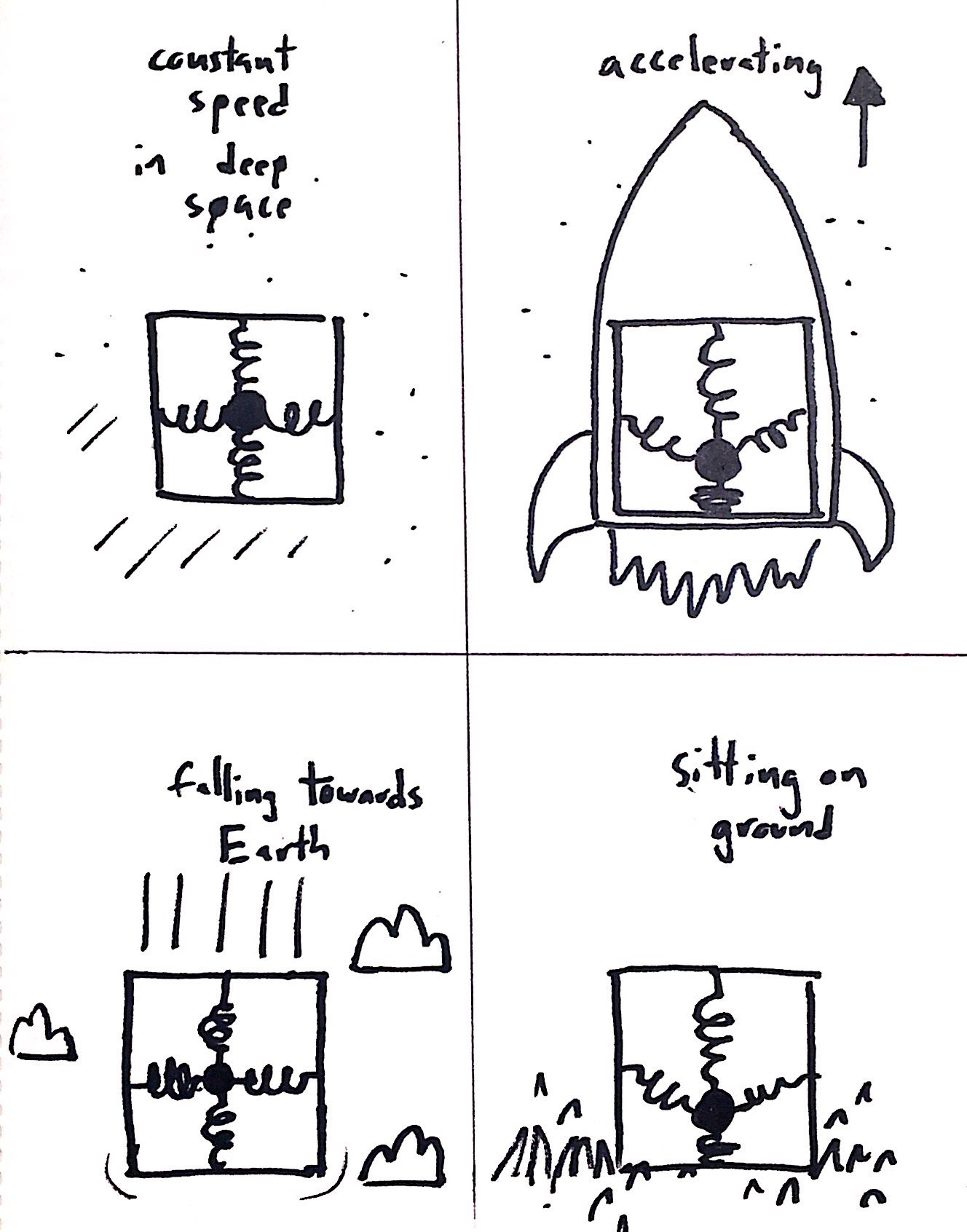 With the knowledge that there is no single and true tree of geometry we are left wondering, “what’s the geometry of our universe? It appears flat, but can we be sure?”
The answer to this question starts with Newton’s First Law:
With the knowledge that there is no single and true tree of geometry we are left wondering, “what’s the geometry of our universe? It appears flat, but can we be sure?”
The answer to this question starts with Newton’s First Law: With the knowledge that there is no single and true tree of geometry we are left wondering, “what’s the geometry of our universe? It appears flat, but can we be sure?”
The answer to this question starts with Newton’s First Law:
With the knowledge that there is no single and true tree of geometry we are left wondering, “what’s the geometry of our universe? It appears flat, but can we be sure?”
The answer to this question starts with Newton’s First Law: Let’s get serious about finding these straight lines.
We can construct a box with springs connected to each face suspending a weight in its center.
When this device has no forces acting on it, the ball will stay equidistant from the walls of the box. When it is accelerated, or being acted upon by a force, the ball will move to the side opposing the force.
This is the same reason you feel pressed into your seat when you push on the gas pedal.
So we can find the straight lines through spacetime by simply tracing paths along which the ball stays at the center of the box.
If we built this box, we would quickly find something bizarre.
Setting the box on the ground, we would find that it would say “I am accelerating upwards!”
Can this be? When we drop it, the box says “No forces are acting on me, therefore I am traveling along a straight line” as it falls.
Let’s get serious about finding these straight lines.
We can construct a box with springs connected to each face suspending a weight in its center.
When this device has no forces acting on it, the ball will stay equidistant from the walls of the box. When it is accelerated, or being acted upon by a force, the ball will move to the side opposing the force.
This is the same reason you feel pressed into your seat when you push on the gas pedal.
So we can find the straight lines through spacetime by simply tracing paths along which the ball stays at the center of the box.
If we built this box, we would quickly find something bizarre.
Setting the box on the ground, we would find that it would say “I am accelerating upwards!”
Can this be? When we drop it, the box says “No forces are acting on me, therefore I am traveling along a straight line” as it falls.
This occurs because the “force” of gravity increases in strength with mass and causes objects of different masses to fall together. We can see this by dropping a feather and a bowling ball in a vacuum to avoid air resistance: they will hit the ground at the exact same time.
So, the box, the springs, and the ball in its center all move downwards together. We are forced into accepting that we are actually accelerating while sitting down, and only traveling on straight lines through spacetime as we fall.
If the paths of falling objects are straight lines, how can we use that to grasp the geometry of spacetime?
We start with our knowledge of how things fall under Newtonian gravity.
If two objects are dropped above the Earth at different heights, they will begin to separate as they fall since gravity is stronger
for the object closer to Earth. This separation is indicative of negative curvature. If two objects were dropped down a shaft through
the Earth, they would tend to converge since Gravity decreases in strength towards the center of the Earth (if you were at the center
you would be pulled equally in all direction). These ideas are manifested in the applet below.